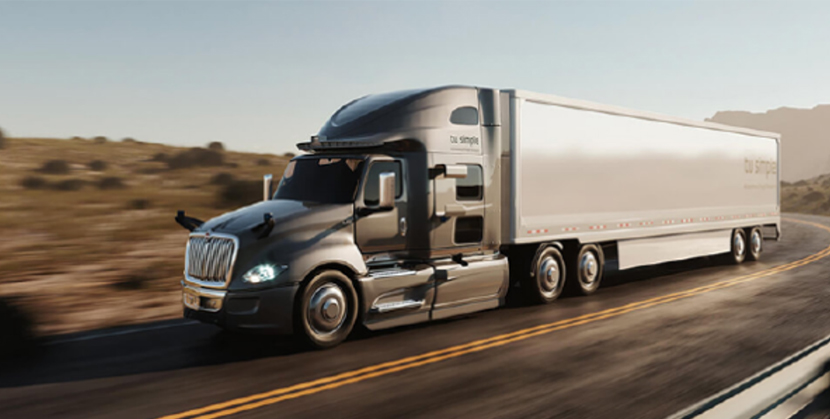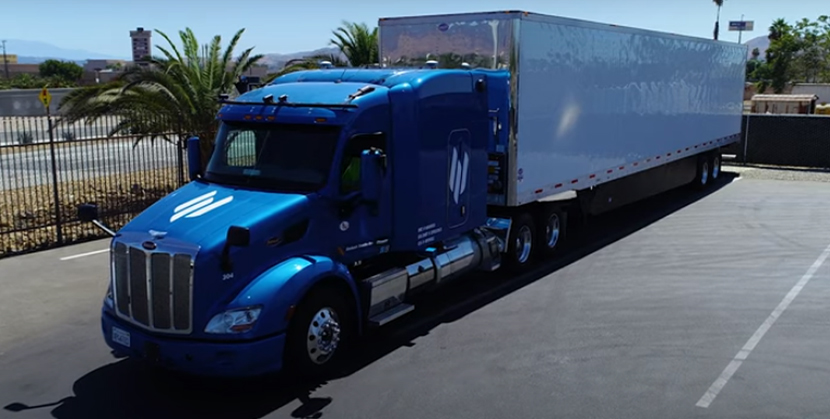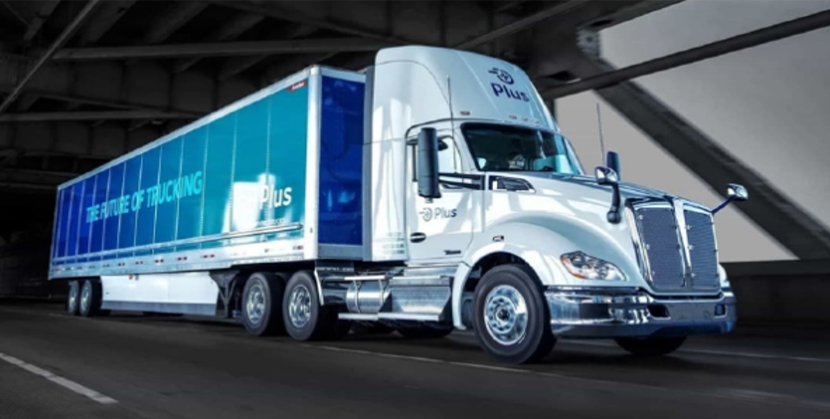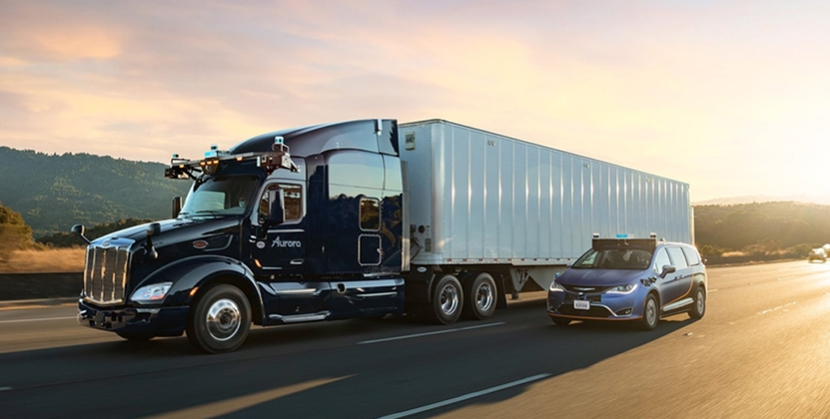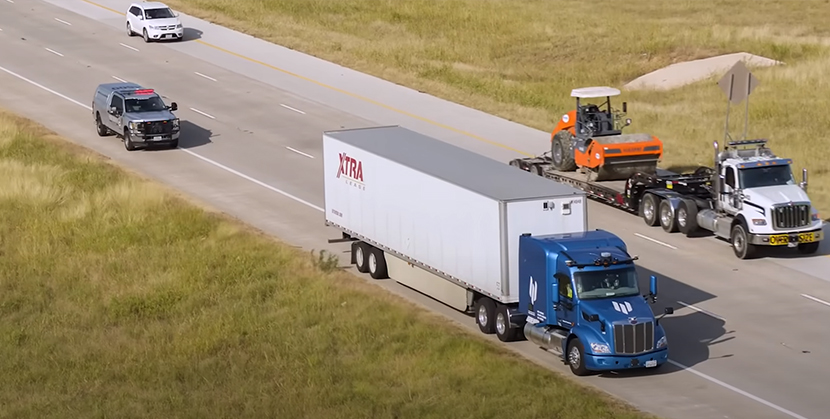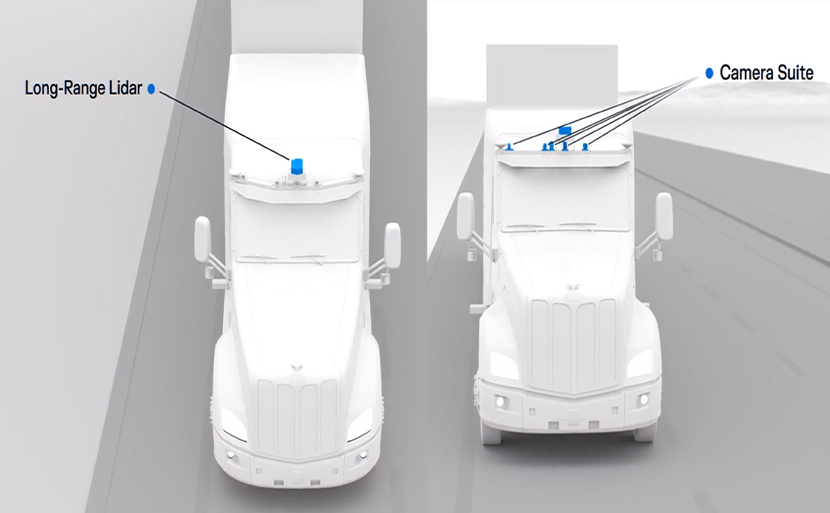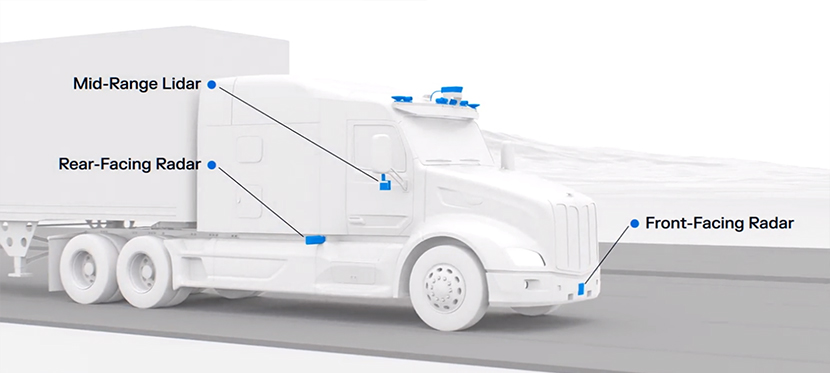With the development of autonomous vehicle technology, interest in self-driving trucks has been increasing. The commercialization of driverless trucks has additionally been accelerated by the huge and ever-growing logistics market and ongoing driver shortages. Here, we examine the present and future of self-driving trucks.
Why the great interest in self-driving trucks?
Self-driving trucks, and their commercialization, are expected to be developed faster than other areas of the autonomous vehicle market. According to a report by the American Trucking Association (ATA), total truck cargo sales in the US reached USD 732.3 billion (approx. KRW 1,025 trillion) in 2020, indicating a thriving market, but the industry is expected to be short approximately 160,000 drivers by 2030.
The self-driving truck market is receiving a lot of attention for several reasons. Some of them include: driver shortages; enormous logistics market; ever-expanding delivery market; development of autonomous vehicle technology; and the possibility of enhancing efficiency through driverless deliveries. Truck driver shortages are ongoing due to the challenging nature of the job and the aging of the current truck driver population. As a result of these persistent problems, industry experts predict that there will be a shortage of 160,000 drivers in the US by 2030. However, logistics demands will continue to increase due to the concentration of the urban population.
Under these circumstances, self-driving trucks are increasingly being considered as a viable solution for both driver shortages and logistics challenges. Needless to say, current autonomous vehicle technology is not yet developed enough for widespread adoption. However, once these driverless trucks are out on the road, many expect that the trucks will make it easier to comply with safety regulations, since they will be transporting only goods without any passengers.
Autonomous trucks are expected to drastically transform the markets in which they will operate. Since they can be operated on highways all day and night without the need for breaks, the trucks are expected to enhance delivery efficiency and drastically change the logistics market. However, the use of driverless trucks also raises social issues like the loss of jobs.
The current state of autonomous trucks
Many companies are now jumping into the self-driving truck business. Some of the companies specializing in driverless trucks include TuSimple, Embark, Gatik, Kodiak, Locomation, and Plus, and existing autonomous driving companies, such as Waymo and Aurora, have also been investing in the driverless truck business. Waymo and Aurora, in particular, are showing a keen interest in autonomous driving technologies because they anticipate that the self-driving truck market will become a reality faster than autonomous taxis and hope to generate profits with the backing of the enormous logistics market. TuSimple went public in the US in April 2021 and Embark and Aurora went public in November 2021.
Currently, self-driving truck makers are working with logistics companies to pilot driverless trucks, and logistics companies such as Amazon, DHL, UPS, and US Express are partnering with manufacturers of self-driving cars (Amazon with Plus, UPS with TuSimple and DHL with TuSimple and Embark) to conduct autonomous driving pilot projects. Autonomous truck makers are expected to supply their products to logistics companies for commercial use as early as 2024.
Key case studies and implications of autonomous trucks
Test operations of self-driving trucks serve as important case studies that highlight the usefulness of driverless trucks and their commercialization. In May 2021, TuSimple announced that it had completed a test run of a driverless truck route from Arizona to Oklahoma in the US, resulting in a 10-hour reduction in driving time (from 24 hours to 14 hours) compared to a truck with a human driver. This pilot operation shows how self-driving trucks are already poised to revolutionize the future logistics market.
In August 2022, Embark partnered with the Texas Department of Public Safety and Security, as part of its efforts to institutionalize self-driving trucks and ensure that they can comply with police regulations. During the project, the driverless truck was able to recognize the police car’s signals and pull over to the side of the road in response. This shows that efficient interaction between the trucks and the police is possible even without a driver.
A self-driving truck responds to a police car’s signals and pulls over to the shoulder of the road (Source: Embark)
In April 2022, there was an accident with TuSimple’s self-driving truck. The driver of the vehicle switched from manual to auto driving, but the truck suddenly turned left and crashed into a median. The driver intervened and switched back to manual operation, and fortunately, the accident did not any cause major injuries. TuSimple claimed that the truck didn’t have an adequate amount of time to switch from manual to auto driving and said that the mistake was on the part of the driver. However, considering that even Level 2 autonomous vehicles (those with partial driving automation) do not experience major problems on the highway when switching from manual to auto driving, it can only be assumed that the accident in April was caused by technical problems with the TuSimple vehicle.
Since self-driving trucks are expected to have a huge impact on many different markets, it is critically important they be perfected, both technologically and institutionally, to prevent accidents.
Technological differences between self-driving cars and trucks
Currently, the technology used for self-driving trucks is similar to that of Level 2 autonomous cars, which have already been commercialized. The biggest difference between the two is the need for long-distance sensors. Since trucks are heavier and need a longer distance to stop, long-distance sensors are essential in preventing accidents. Embark and Kodiak are currently collaborating with Lumina, a company that develops long-distance LiDAR technology, while TuSimple has partnered with AEye.
Although self-driving trucks are now being developed mainly by major startups, with the continued growth of the market, it won’t be long before existing automakers also seek to enter the market. It will be interesting to see the future competition between automakers and startups as they vie for market dominance.
Self-driving trucks and changes in the logistics market
Self-driving trucks are expected to bring about major changes in the logistics market. First, in terms of the competition between logistics companies and automakers, logistics companies are expected to take the lead in the market. Logistics companies are well-positioned to strengthen their market dominance and reduce costs through the direct supply of self-driving trucks and efficient batch operation based on fast delivery times. At the same time, competition for market leadership between logistics companies will also continue to intensify.
Similar to the current logistics system, autonomous delivery is expected to be implemented in three stages: highway delivery; city delivery; and delivery into buildings. With autonomous driving technology advancing from highway to urban streets, autonomous urban delivery is expected to gradually progress together with highway delivery. In the future, the importance of robotic technology will also increase as delivery services extend into the insides of buildings.
Self-driving trucks are expected to take to the road as early as 2024, and their use will continue to rapidly grow in response to market demands. As autonomous driving technology and the logistic markets in which driverless trucks operate continue to evolve, truck manufacturers and logistics companies will need to quickly respond to market changes while taking urban and social changes into consideration.
By Jeong Gu-min (Professor of Electrical Engineering, Kookmin University)
2022.10.18



